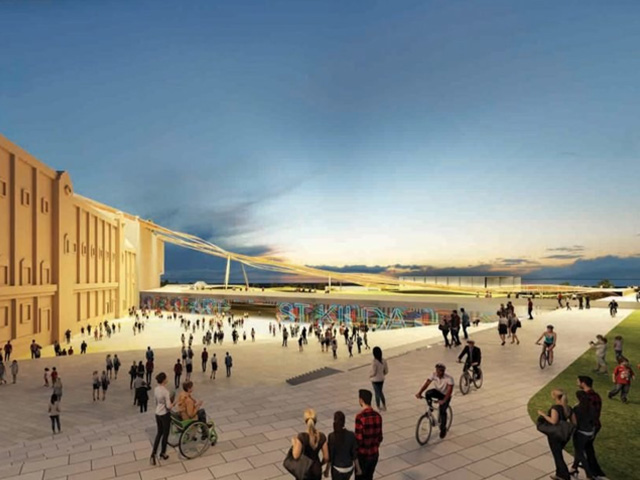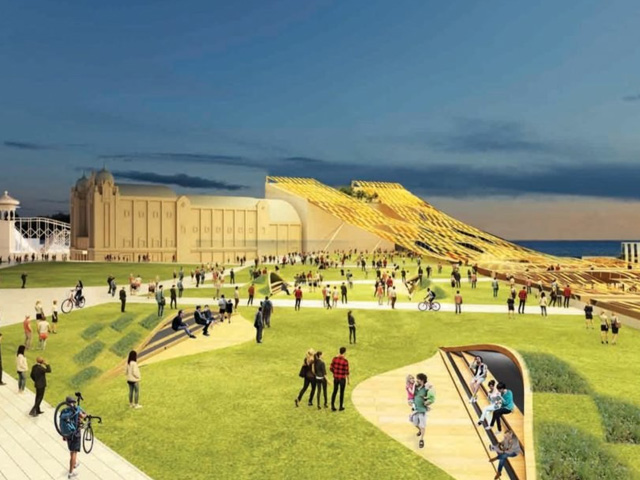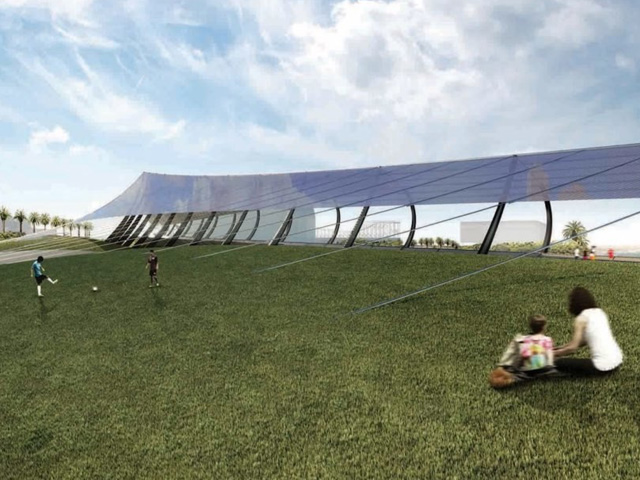PUBLIC ART = CLEAN ENERGY
12 Dec 2018
Taking out the top prize at the 2018 Land Art Generator Initiative, Melbourne-based NH Architecture’s public art installation could generate renewable energy for the City of Port Phillip.

Light Up by NH Architecture
Melbourne-based NH Architecture placed first in the 2018 Land Art Generator Initiative (LAGI) design competition in Melbourne, Australia. Sponsored by the State of Victoria’s Renewable Energy Action Plan with clean energy targets of 25 percent by 2020, the international competition sought large-scale works of public art that generate renewable energy in visible ways for St. Kilda Triangle in the City of Port Phillip.  Light Up by NH Architecture
Light Up by NH Architecture
NH Architecture’s winning proposal, Light Up, harnesses solar, wind and microbial fuel cell technologies to produce 2200 MWh of energy annually — enough to power nearly 500 homes. As the winning installation, the Light Up team will receive $16,000 in prize money.
NH Architecture’s winning proposal consists of a lightweight tensile shade structure topped with 8600 efficient, flexible solar photovoltaic panels envisioned over Jacka Boulevard. Designed with the aim of “maximising the public realm” without compromising views, the design makes use of tested components available on the market. The clean-energy power plant was also designed to harness wind energy and uses microbial fuel cells to tap into energy from plant roots.  Light Up by NH Architecture
Light Up by NH Architecture
“LAGI 2018 is a window into a world that has moved beyond fossil fuels — a world that celebrates living in harmony with nature by creating engaging public spaces that integrate renewable energy and energy storage artfully within the urban landscape,” said LAGI co-founders Elizabeth Monoian and Robert Ferry.
“Light Up [is a] power plant where you can take your family for a picnic. They both show how beauty and clean energy can come together to create the sustainable and resilient infrastructure of the future city. These artworks are cultural landmarks for the great energy transition that will be visited by generations in the future to remember this important time in human history.”  Night & Day by Olson Kundig
Night & Day by Olson Kundig
Seattle architectural practice Olson Kundig placed second in the design competition, taking home $5000 in prize money for their submission Night & Day, which also taps into the power of solar with 5400sqm of solar panels. The solar system is combined with two Pelton turbines and a hydro battery to operate 24 hours a day and produce 1000 MWh annually.  Night & Day by Olson Kundig
Night & Day by Olson Kundig







